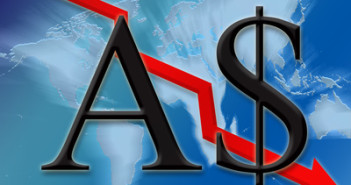The Australian dollar took a hit last week as the US economy continued to gather momentum and the market reacted to more downbeat comments from RBA governor Glen Stevens about the value of the local currency.
At last Fridays close the Aussie dollar was trading at US82.44 down from the previous week’s close of US83.11 cents.
Throughout the week the currency was pressured by a continuous stream of positive data from the US but the final nail in the coffin came on Friday when the latest Reuters/Michigan Consumer Sentiment Index was released to the market at a figure of 93.8 well above analysts’ expectations of 89.5 which sent the Australian dollar tumbling.
Guest Post by Andrew Masters from FiboGroup
In an Interview with the Australian financial review RBA governor Glen Stevens gave his take on the Australian economy and reiterated calls for the Aussie dollar to fall further.
Commenting on Australia’s terms of trade he noted that, “In terms of trade, while historically high we’re still falling further and faster than was assumed a year back.”
Taking his recent negative stance on the level of the Aussie dollar to a new high he also mentioned that,
“It’s quite likely that it the Australian dollar will a year from now be lower than it is today, on the basis of the facts that we presently have,”
“Which means that in a year from now the Aussie dollar will be lower than where it is at the moment”
Not shy about how far he would like to see the currency fall and more downbeat from the previous year the Governor noted,
“On the basis of the facts that we presently have. And, yes, a year ago I said probably 85US cents was better than 95. And if I had to pick a figure now, I would say probably 75 is better than 85”.
Brushing off the chance of an Interest rate cut to pull the Australian economy out of its woes he noted,
“I don’t think we see many people at all saying ‘look, the cost of money is too high, or I can’t get money’,” “I don’t think that’s really the problem now.”
Going against the Governors prediction that rates will remain on hold, and predicting that a rate cut or two will be good for the Australian economy, and may help kick start growth was Westpac chairman Lindsay Maxsted who mentioned at the latest Westpac annual general meeting,
“We expect growth in the Australian economy to gradually improve in the year ahead as strengthening household finances, low interest rates, and a competitive Australian dollar boost domestic spending,”
The Unemployment rate in Australia climbed last month to its highest rate in over 10 years which is turning out to be one of the biggest drags on the local economy as fears of job security creep in.
The Australian Bureau of Statistics data for November showed that unemployment in Australia rose to 6.3% from last month’s 6.2%, moving to its highest level since 2002.
On a brighter note the number of jobs created in November was 42.700 well above consensus of 15,000 although most of the figure was due to part time jobs.
At first sight the numbers seem appealing but when you take a closer look all was not as it seemed claimed Commonwealth Bank currency strategist Joseph Capurso who noted,
“When you look at the detail, virtually all of the growth was in part-time jobs, so the headline was probably a bit better than it looked,”
Iron ore, Australia’s biggest export continued to slide finishing below $70 a tonne last week with the government predicting the price is heading to $60 which is a disaster for the local economy as the projection for the budget was $92.
Speaking about the pain it was causing to Australia’s budget Treasurer Joe Hockey noted in a televised press conference that,
“We are forecasting that it’ll remain around $60 a ton for the foreseeable future,”
“The decline in the price of iron ore has had a big impact on the budget, as had a 15 percent fall in thermal coal and 20 percent fall in wheat prices,”
